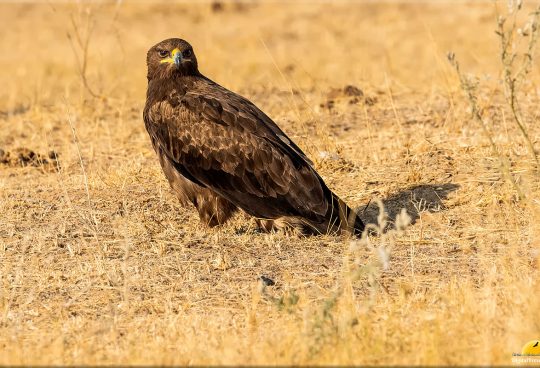The black-naped monarch or black-naped blue flycatcher (Hypothymis azurea) is a slim and agile passerine bird belonging to the family of monarch flycatchers found in southern and south-eastern Asia. They are sexually dimorphic, with the male having a distinctive black patch on the back of the head and a narrow black half collar (“necklace”), while the female is duller with olive brown wings and lacking the black markings on the head. They have a call that is similar to that of the Asian paradise flycatcher, and in tropical forest habitats, pairs may join mixed-species foraging flocks. Populations differ slightly in plumage colour and sizes.
The black-naped monarch breeds across tropical southern Asia from India and Sri Lanka east to Indonesia and the Philippines. This species is usually found in thick forests and other well-wooded habitats. The calls are a sharp and abrupt skrip. The main breeding season in India is in summer from May to July. Two to three eggs are laid in a cup nest placed in the fork of a tree. The nest is decorated with spider-egg cases. The black-naped monarch has short legs and sits very upright whilst perched prominently, like a shrike. It is insectivorous, often hunting by flycatching. When alarmed or alert, the nape feathers are raised into a pointed crest. They join mixed-species foraging flocks, being among the most significant members of such flocks in the Western Ghats, and are active in the understory of forest canopies. It is found in Broadleaf evergreen forest, semi-evergreen forest, deciduous forest and peatswamp-forest.
The black naped monarch flycatcher feeds on insects, including small butterflies and moths (Lepidoptera) and grasshoppers (Orthoptera), also small beetles (Coleoptera) and bugs. Not globally threatened it is classified as Least Concern. Generally widespread and common throughout its huge range, and readily accepts non-primary habitats.
![]()





